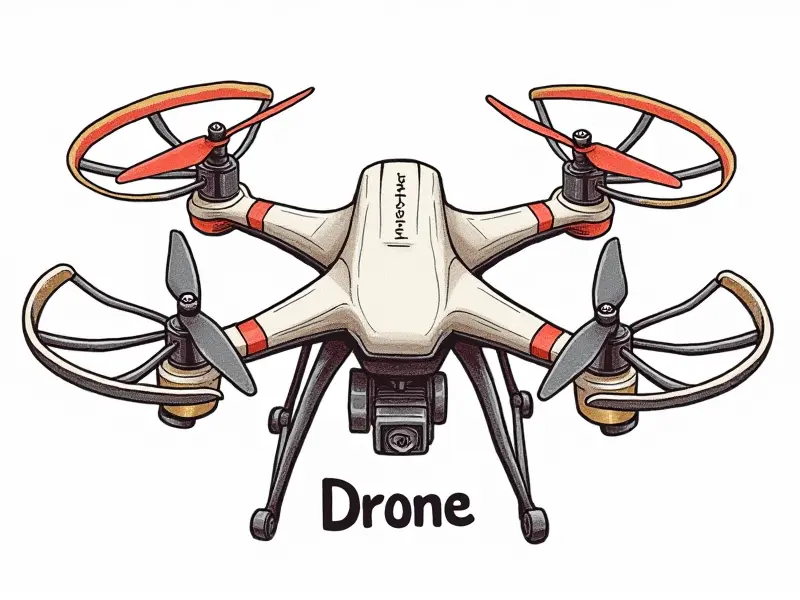Do drones need Wi-Fi for FPV?

Can Drones Fly Without WiFi?
Drones, particularly those used for first-person view (FPV) flying, often rely on various forms of wireless communication. However, the necessity of Wi-Fi for these drones is a common point of confusion among enthusiasts and beginners alike. The short answer is that many FPV drones do not require Wi-Fi to fly, as they can operate using other types of wireless signals. This flexibility allows pilots to enjoy the thrill of flying without being tethered to an internet connection.
Do You Need WiFi for FPV Drones?
The question of whether you need Wi-Fi for FPV drones is a nuanced one. While some high-end FPV systems may incorporate Wi-Fi capabilities, it's not strictly necessary for basic operation. The primary function of an FPV drone is to provide the pilot with real-time video feedback through a transmitter and receiver setup. This can be accomplished using 2.4GHz or 5.8GHz radio frequencies, which do not require internet connectivity.
Is WiFi Essential for FPV Drone Flying?
Wi-Fi is not essential for FPV drone flying; it's more of a supplementary feature that enhances certain aspects of the experience. For instance, Wi-Fi might be used to stream video to smartphones or tablets connected to an internet network, allowing pilots to share live footage on social media platforms during flights. However, this functionality is optional and does not impact the fundamental capability of FPV drones to transmit video feeds directly from the drone's camera.
Exploring Wi-Fi Independence for FPV Drones
The independence of FPV drones from Wi-Fi is a significant advantage in many scenarios. By relying on dedicated wireless channels, these drones can operate reliably without interference from other devices that use Wi-Fi signals. This ensures smoother video transmission and better overall performance during flights.
Direct Link Transmission
A direct link between the drone's transmitter and receiver is often sufficient for FPV flying. This setup bypasses any need for internet connectivity, making it ideal for outdoor activities where Wi-Fi coverage might be limited or nonexistent.
Can FPV Work Without Internet?
Yes, FPV can work without an internet connection. The core functionality of FPV relies on the transmission of video signals from a camera mounted on the drone to a ground-based receiver. This process typically uses radio frequencies rather than Wi-Fi, allowing for reliable operation in various environments.
Wi-Fi Optional for FPV Drones?
In many cases, using Wi-Fi is optional when it comes to FPV drones. While some advanced systems may offer internet connectivity features, these are not required for basic FPV operations. Pilots can choose whether or not to incorporate Wi-Fi based on their specific needs and the intended use of their drone.
FPV Connectivity Beyond WiFi
The world of FPV drones extends far beyond just Wi-Fi connectivity. Other forms of wireless communication, such as 5.8GHz transmitters and receivers, offer robust video transmission capabilities that are independent of internet infrastructure. These technologies provide a reliable alternative for pilots seeking to maximize their flying experience without the constraints of Wi-Fi.
Alternative Frequencies
- 2.4GHz: Widely used due to its broad coverage and compatibility with various devices, but can suffer from interference in crowded environments.
- 5.8GHz: Offers better performance and less interference compared to 2.4GHz, making it ideal for high-quality video transmission over longer distances.
Alternatives to WiFi for FPV Connectivity
In addition to Wi-Fi, there are several alternatives that can be used for FPV connectivity:
- 5.8GHz Transmitters and Receivers: Provide high-quality video transmission with minimal latency.
- 433MHz Systems: Used in some long-range FPV setups, offering extended range but lower resolution compared to 2.4GHz or 5.8GHz systems.
WiFi vs Direct Link for FPV Drones
The choice between Wi-Fi and direct link transmission depends on the specific requirements of your FPV drone setup:
- Wi-Fi: Useful for sharing live video feeds via social media or streaming platforms.
- Direct Link: Preferred for reliable, interference-free video transmission during flights.
FPV Drone Transmission: WiFi or Not?
The decision to use Wi-Fi for FPV drone transmission should be based on the intended application. For pilots who want to share their flight experiences in real-time via social media, Wi-Fi can be a valuable tool. However, for those prioritizing video quality and reliability during flights, direct link transmission using 5.8GHz or similar frequencies is often the better choice.
How Important is WiFi for FPV Flying?
The importance of Wi-Fi in FPV flying varies depending on your objectives:
- Social Media Sharing: If you plan to stream live footage to social media platforms, Wi-Fi can be crucial.
- Video Quality and Reliability: For pilots focused on high-quality video transmission during flights, direct link systems are generally more reliable.
In conclusion, while Wi-Fi is an optional feature for FPV drones, it offers unique benefits that can enhance the flying experience. However, the core functionality of FPV flying remains intact without Wi-Fi, thanks to alternative wireless technologies that provide robust and interference-free video transmission. Whether you choose to incorporate Wi-Fi into your setup or rely on direct link systems depends on your specific needs and preferences.

